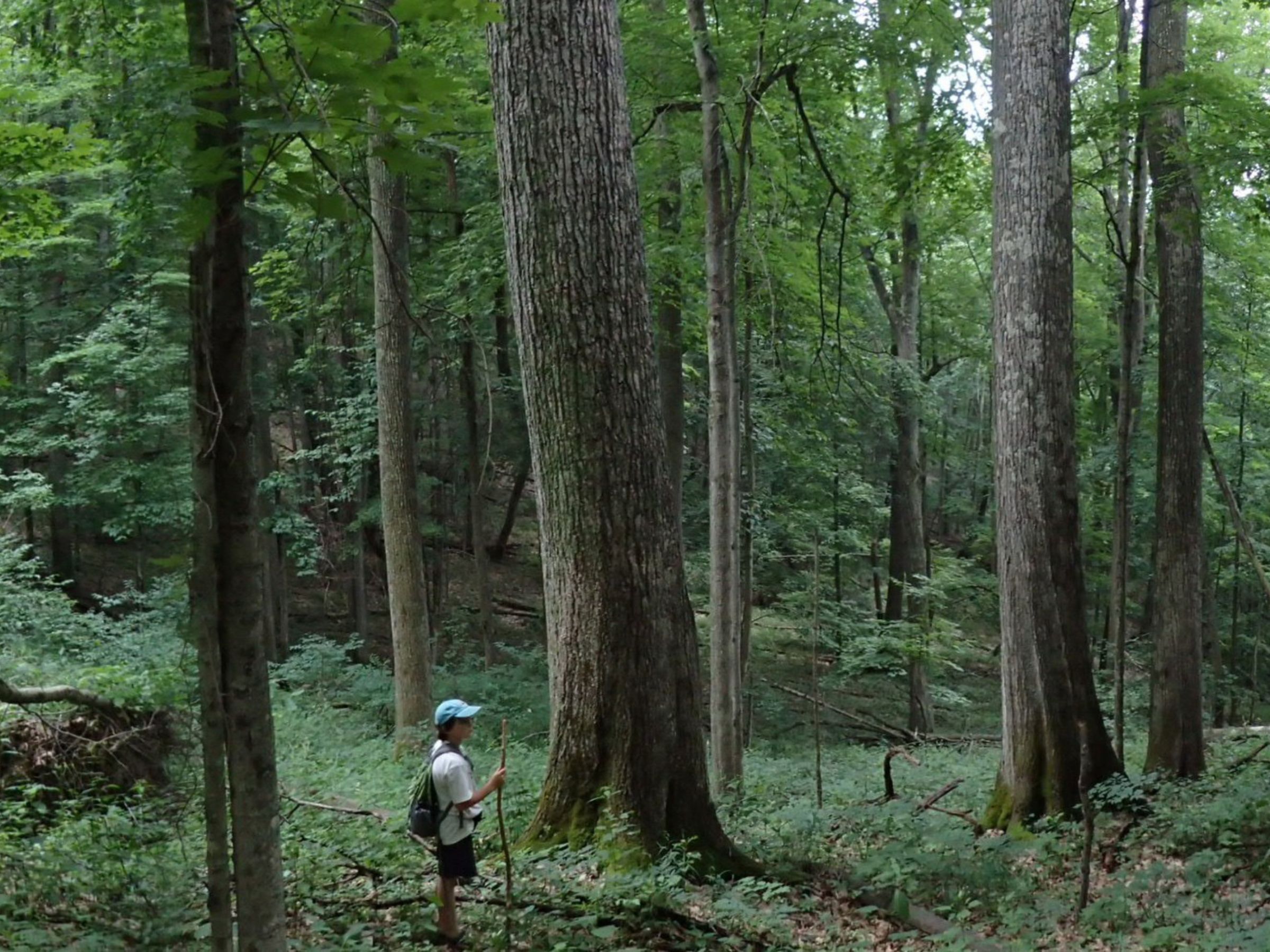A grove of older-growth trees near Leadmine set to be clear-cut in the Upper Cheat River project. (John Coleman)
By Joseph Dumire
Forgetting history, the United States Forest Service (USFS) is on the brink of making the same mistake they did 50 years ago: clear-cutting the Mon. What they have forgotten is in 1973, citizen protests stopped them and that brutal forestry practice in West Virginia, as we are trying to do now.
The USFS currently has set its sights and plans on clear-cutting close to 3,463 acres—nearly five and a half square miles—of the Upper Cheat River portion of our spectacular Monongahela National Forest, including mature and old-growth trees that President Biden specifically called out to protect for their critical value in slowing climate change in his Executive Order issued last Earth Day, April 2022.
Another aspect of our history the USFS seems to have forgotten is the consequences of earlier clear-cuts: the floods of 1907 and again in 1936 and 1985, when heavy rains hit steep slopes denuded of trees and sent flood waters cascading into the mighty Cheat River, downstream into Pittsburgh, turning downtown streets into canals wreaking damage of $5 million and $250 million, respectively.
We face the same dangers today. Clear-cutting is an ugly forest management practice that decimates not only every standing tree but, in its wake, the forests’ former networks of tree roots dies and no longer holds the soil. The forests proposed for this upcoming operation are on slopes above farms and towns, some so steep that the USFS plans to bring helicopters in from Colorado to reach the trees. This means the cost to carry out the operation will exceed any gains from the timber taken, by an estimated $1.4 million dollars.
However, that may be a low estimate of the potential loss. For the most recent harvest, there were no buyers. The century-old trees ended up having to be chipped and sold off as sawdust to a local charcoal factory.
The land proposed for clear-cutting is home to 225 bird species and 60 fish species, including 12 game fish. In the trees above the Upper Cheat River live federally protected West Virginia northern flying squirrels. In their shade dwell federally listed Cheat Mountain salamanders and rare green salamander. Endangered Northern long-eared bats and other threatened bat species slalom through the tree trunks. Brook trout thrive in the shaded waters because they are cool. If the forest is slashed away the streams will warm and choke with sediment.
The Forest Service’s principal rationale for the Upper Cheat River project is to create varied-age landscapes, early successional habitat. But right next door is all kinds of private property, already clear-cut, patchworked around the proposed National Forest project.
What’s rare in the east is old growth. Monongahela’s old trees now store over a century’s worth of carbon, keeping it from wreaking exponentially more havoc in causing extreme heat, cold, droughts and floods.
Just last month the Forest Service withdrew a plan to log 2,000 acres of older forests in Oregon’s Willamette National Forest, headwaters of the McKenzie River. Residents there successfully protested the Flat Country Project based on concerns about issues like ours.
We’re asking the Forest Service to follow that lead and change course on the Upper Cheat River Project, to reconsider its role as purveyors of publicly owned resources to private industry. The ultimate long-term value of our National Forests is to the public, in clean air, clean water, recreation and the carbon-eating power of big old trees. We hope the USFS will rise to a higher purpose and protect them.
Raised in Thomas, West Virginia, Joseph W. Dumire graduated from West Virginia University and attended the University of Virginia National AICPA Banking School. In his banking career he became head internal auditor, retiring from the housing industry and returning to live in Thomas. Dumire is known as a local historian and advocate for the environment.

